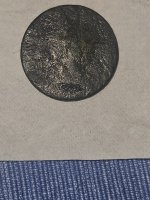ShipwreckHunter
Jr. Member
- May 15, 2015
- 38
- 137
- Detector(s) used
-
Garrett Master Hunter
GTI 2500
Infinium LS
Sea Hunter II
Pro-Pointer AT
- Primary Interest:
- Shipwrecks
Mars, also known as Makalös ("peerless, astounding, magnificent ") was a Swedish warship that was built between 1563 and 1564. It was the leading ship of king Eric XIV of Sweden's fleet, and at 48 meters and equipped with 107 guns it was one of the largest warships of the time, even larger than the famous Swedish ship Vasa. In 1564, during the Northern Seven Years' War, the ship caught fire and exploded during the first battle of Öland in the Baltic Sea. It was named the Mars for the Roman god of war, but it went up in a ball of flames in a brutal naval battle in 1564, consigning 800 to 900 Swedish and German sailors and a fortune in gold and silver coins to the bottom of the Baltic Sea.
Now, a few years after the ship's discovery, researchers have concluded that the one-of-a-kind ship is also the best preserved ship of its kind, representing the first generation of Europe's big, three-masted warships. Naval historians know a lot about 17th-century ships, but very little about warships from the 16th century, said Johan Rönnby, a professor of maritime archaeology at Södertörn University in Sweden, who is studying the 197-foot-long (60 meter) wreck.
Many treasure hunters, archaeologists, and history aficionados have sought the Mars over the years. But they were unsuccessful until the late spring of 2011, when a group of divers located one of maritime archaeology's greatest finds in 246 feet (75 meters) of water. Legend has it that a specter rose from the inferno to guard the Mars, the pride of the Swedish navy, against ever being discovered. The discovery was the culmination of a 20-year search by Richard Lundgren, along with his brother Ingemar and their colleague Fredrik Skogh. The men had dreamed of finding the mighty Mars since making a childhood visit to a Stockholm museum housing another iconic Swedish warship, named the Vasa. Richard and Ingemar Lundgren became professional divers in part because of that dream.
The Mars sank on May 31, 1564, off the coast of a Swedish island called Öland. She came to rest on the seafloor tilted to her starboard, or right, side. Low levels of sediment, slow currents, brackish water, and the absence of a mollusk called a shipworm–responsible for breaking down wooden wrecks in other oceans in as little as five years–combined to keep the warship in remarkable condition.
What makes this find even more exciting, said Lundgren, is that the Mars didn't sink because of a design flaw or poor seamanship.
"Mars was a functioning war machine that performed extremely well in battle," he explained. She sank loaded to the gills with cannons–even her crow's nests had guns–sailors, and all the accoutrements needed to run a ship built for war (including eight different kinds of beer).
This warship had "totally unheard of firepower" for her time, said Lundgren. And it's those cannons that played a role in her demise.
The Mars went down while engaged with a Danish force allied with soldiers from a German city called Lübeck. The Swedes routed the Danes on the first day of battle, said Rönnby. So on the second day, the Germans decided to press their luck. German forces began lobbing fireballs at the Mars and eventually succeeded in pulling alongside the burning ship so soldiers could board her. As gunpowder on the warship fueled the inferno, the heat became so intense that cannons began to explode, said Rönnby.
Those explosions eventually sank the warship. Legend, however, tells a slightly different story. The Swedish kings at the time were busy trying to consolidate their position, Rönnby explained. "[But] the Catholic Church was a problem for the new kings because it was so powerful," he said. So in trying to diminish the church's power, monarchs like Erik XIV–who commissioned the Mars–would confiscate church bells, melt them down, and use the metal to make cannons for their new warships. Legend has it that carrying those repurposed church bells cursed the Mars to a watery grave. The warship carried either 107 or 173 cannons of many different sizes.
There is a new "Mission to Mars" planned for later this year ...
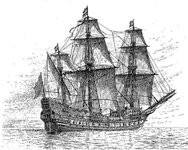
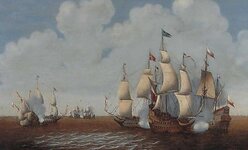
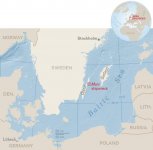
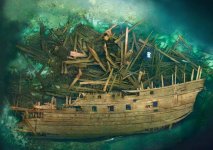
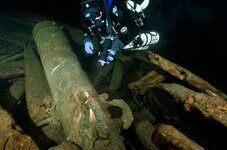
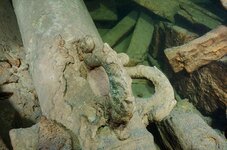

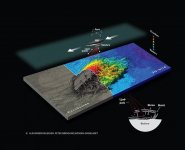
If you like stories of shipwrecks and treasure, please visit and like my Facebook page at:
(Link removed by mod for rule violation, posting Facebook page)
Now, a few years after the ship's discovery, researchers have concluded that the one-of-a-kind ship is also the best preserved ship of its kind, representing the first generation of Europe's big, three-masted warships. Naval historians know a lot about 17th-century ships, but very little about warships from the 16th century, said Johan Rönnby, a professor of maritime archaeology at Södertörn University in Sweden, who is studying the 197-foot-long (60 meter) wreck.
Many treasure hunters, archaeologists, and history aficionados have sought the Mars over the years. But they were unsuccessful until the late spring of 2011, when a group of divers located one of maritime archaeology's greatest finds in 246 feet (75 meters) of water. Legend has it that a specter rose from the inferno to guard the Mars, the pride of the Swedish navy, against ever being discovered. The discovery was the culmination of a 20-year search by Richard Lundgren, along with his brother Ingemar and their colleague Fredrik Skogh. The men had dreamed of finding the mighty Mars since making a childhood visit to a Stockholm museum housing another iconic Swedish warship, named the Vasa. Richard and Ingemar Lundgren became professional divers in part because of that dream.
The Mars sank on May 31, 1564, off the coast of a Swedish island called Öland. She came to rest on the seafloor tilted to her starboard, or right, side. Low levels of sediment, slow currents, brackish water, and the absence of a mollusk called a shipworm–responsible for breaking down wooden wrecks in other oceans in as little as five years–combined to keep the warship in remarkable condition.
What makes this find even more exciting, said Lundgren, is that the Mars didn't sink because of a design flaw or poor seamanship.
"Mars was a functioning war machine that performed extremely well in battle," he explained. She sank loaded to the gills with cannons–even her crow's nests had guns–sailors, and all the accoutrements needed to run a ship built for war (including eight different kinds of beer).
This warship had "totally unheard of firepower" for her time, said Lundgren. And it's those cannons that played a role in her demise.
The Mars went down while engaged with a Danish force allied with soldiers from a German city called Lübeck. The Swedes routed the Danes on the first day of battle, said Rönnby. So on the second day, the Germans decided to press their luck. German forces began lobbing fireballs at the Mars and eventually succeeded in pulling alongside the burning ship so soldiers could board her. As gunpowder on the warship fueled the inferno, the heat became so intense that cannons began to explode, said Rönnby.
Those explosions eventually sank the warship. Legend, however, tells a slightly different story. The Swedish kings at the time were busy trying to consolidate their position, Rönnby explained. "[But] the Catholic Church was a problem for the new kings because it was so powerful," he said. So in trying to diminish the church's power, monarchs like Erik XIV–who commissioned the Mars–would confiscate church bells, melt them down, and use the metal to make cannons for their new warships. Legend has it that carrying those repurposed church bells cursed the Mars to a watery grave. The warship carried either 107 or 173 cannons of many different sizes.
There is a new "Mission to Mars" planned for later this year ...








If you like stories of shipwrecks and treasure, please visit and like my Facebook page at:
(Link removed by mod for rule violation, posting Facebook page)
Last edited by a moderator:





